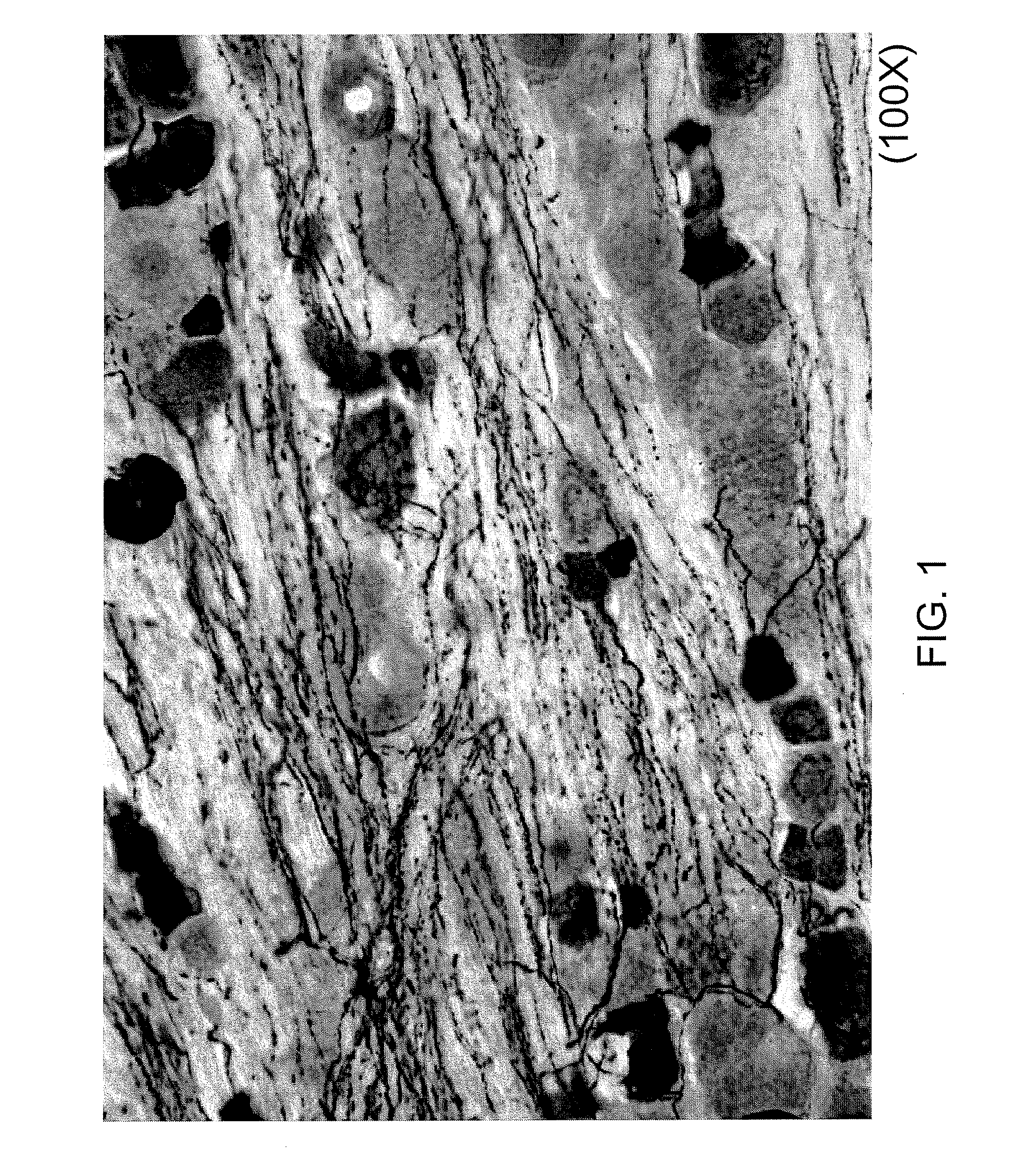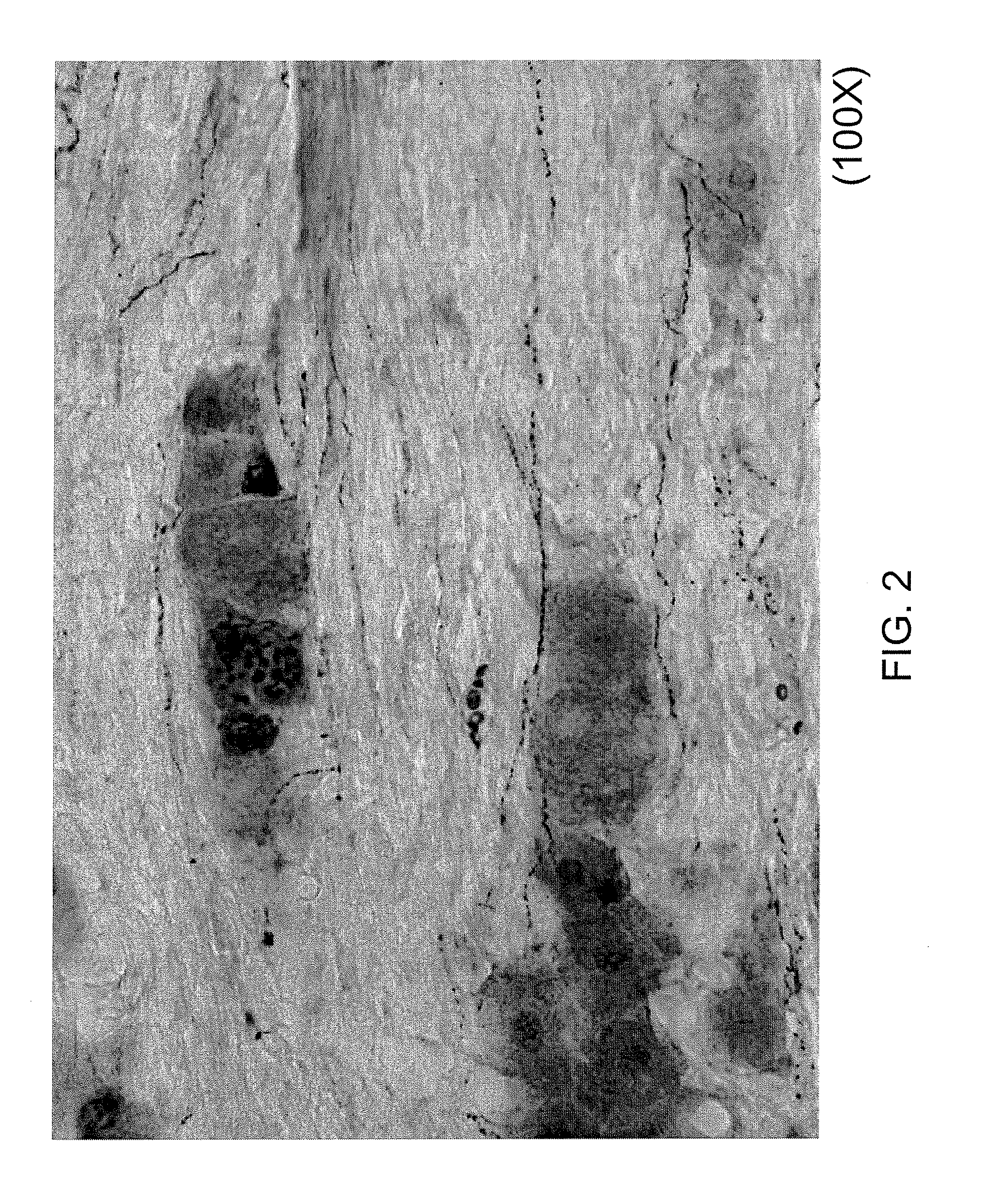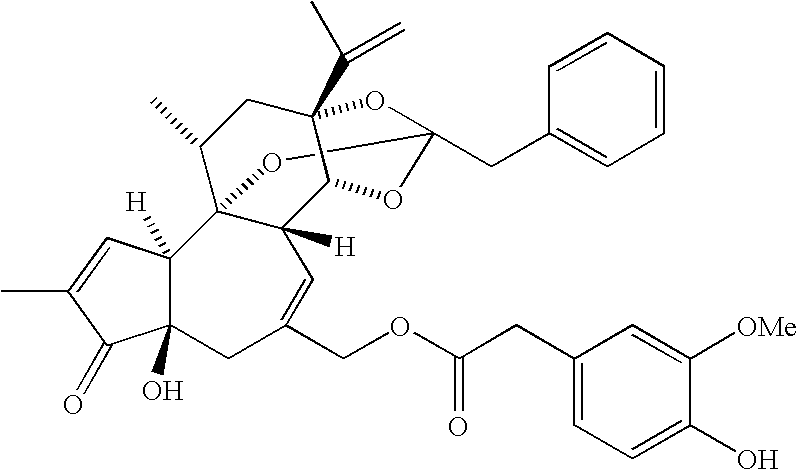Selective ablation of pain-sensing neurons by administration of a vanilloid receptor agonist
a vanilloid receptor and selective ablation technology, applied in the direction of biocide, plant/algae/fungi/lichens, drug compositions, etc., can solve the problems of inability to demonstrate thermal analgesia, inability to control pain well by any currently available method, and often fall short of therapeutic goals. , to achieve the effect of blocking pain sensation and neurogenic inflammation
- Summary
- Abstract
- Description
- Claims
- Application Information
AI Technical Summary
Benefits of technology
Problems solved by technology
Method used
Image
Examples
example 1
Administration of VR-1 Agonist to Cells Expressing VR-1
[0071]The effect of VR-1 agonist administration to cells expression VR-1 was measured using the following methodology.
[0072]A VR1 expression vector encoding a VR-1 / Green Fluorescent Protein construct was expressed in Cos7 and HEK293 cells using transient transfection. Western blot analysis showed that VR1 eGFP protein exhibited GFP-specific immunoreactivity and was not cleaved. The cells in the population that fluoresced green were voltage clamped and the holding potential adjusted to −60 mV. The first application of 10 μM capsaicin (CAP) to the cells induced a large inward current (N=5). Multiple exposures resulted in a gradual decrease, indicating receptor desensitization. The VR1 eGFP-mediated current was attenuated by co-incubation of an antagonist, 10 μM capsazepine (CPZ). Current versus voltage relationships demonstrated that the VR1eGFP-mediated current was not voltage sensitive. The reversal potential was calculated to b...
example 2
VR1 Agonist Injection into the Trigeminal Ganglion
[0084]Methods
[0085]Trigeminal microinjections: Male Sprague Dawley rats (300 g) were anesthetized with a combination of ketamine / xylazine and placed in a stereotaxic frame. A 26 gauge stainless steel catheter, sharpened with a bevel of ˜0.5 mm, was positioned at 2.5 mm posterior and 1.5 mm lateral to bregma. The needle was advanced till it touched the base of the skull. At this point the tip has penetrated through the trigeminal ganglion, which is ˜1.2 mm in depth. The needle was retracted 0.5 mm and RTX (200 ng) was injected in a volume of 2 microliters over 1.5 to 2 min. The RTX was diluted with 0.9% saline from a stock solution which contained 1 mg / ml of RTX, 10% ethanol, 10% Tween 80 and 80% normal saline. The vehicle that was injected was a 1:10 dilution of the RTX stock vehicle using 0.9% saline as the diluent. The needle is left in place for an additional minute, withdrawn, and the scalp incision is closed with stainless steel...
example 3
Intrathecal Administration of RTX
[0091]Pain sensitivity following intrathecal administration of RTX to rats was measured using a test for thermal sensitivity well known to those in the art, the paw withdrawal latency test (e.g., Hargreaves (1988) Pain 32:77-88). Sprague Dawley rats received 6 ug of RTX in a 5 microliter volume administered by lumbar puncture. The baseline sensitivity was 8.4±1.3 second. Following administration of RTX, the paw withdrawal latency was 18±1.2 seconds. No attenuation of mechanical pinch sensitivity was observed. Thus, RTX administration resulted in attenuation of thermal sensitivity.
PUM
| Property | Measurement | Unit |
|---|---|---|
| volume | aaaaa | aaaaa |
| volume | aaaaa | aaaaa |
| depth | aaaaa | aaaaa |
Abstract
Description
Claims
Application Information
 Login to View More
Login to View More - R&D
- Intellectual Property
- Life Sciences
- Materials
- Tech Scout
- Unparalleled Data Quality
- Higher Quality Content
- 60% Fewer Hallucinations
Browse by: Latest US Patents, China's latest patents, Technical Efficacy Thesaurus, Application Domain, Technology Topic, Popular Technical Reports.
© 2025 PatSnap. All rights reserved.Legal|Privacy policy|Modern Slavery Act Transparency Statement|Sitemap|About US| Contact US: help@patsnap.com



